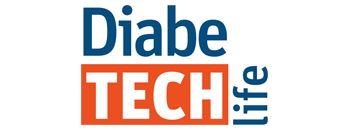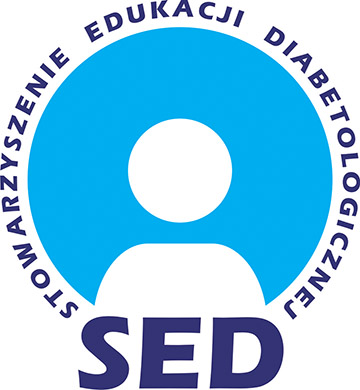Insulinoterapia w cukrzycy z uwzględnieniem stosowania analogów
Piśmiennictwo
1.Silink M., Fichna P.: Cukrzyca wieku dziecięcego i okresu dojrzewania. Podręcznik leczenia i kontroli cukrzycy insulinozależnej (typ I). Oddział Poznański PTP 1996;53-55:200-203
2.Tatoń J., Czech A.: Leczenie insuliną. W: Diabetologia. Tatoń J., Czech (red.) Wydawnictwo Lekarskie PZWL. Warszawa 2001:267-313.
3.Czyżyk A. Patofizjologia i klinika cukrzycy. PWN, Warszawa 1997: 232-253
4.Zonenberg A., Szelachowska M., Kinalska I.: Zastosowanie analogów w diabetologii. Endokrynol. Pol. 1999;50, supl. 1:32-7
5.Kinalska I., Szelachowska M., Zonenberg A., et al.: Bezpieczeństwo stosowania Humalogu u pacjentów z cukrzycą typu 1 i 2. Diabetologia Polska 1997;4, supl.2:25-32
6.Bode B., Weinstein R., Bell D. et al.: Comparison of insulin aspart with buffered regular insulin and insulin lispro in continuous subcutaneous insulin infusion: a randomized study in type 1 diabetes. Diabetes Care 2002;25:439-44
7.Koivistoo V.A., Touminen J.A., Ebeling P.: Lispro mixture 25 reduces postprandial glucose compared to human insulin 30/70 and NPH in NIDDM patients. Diabetes 1988;47 (suppl. 1):A311
8.DCCT Research Group. The effect of intensive diabetes treatment on the development and progression of long-term complications in insulin-dependent diabetes mellitus: The Diabetes Control and Complication Trial. N. Engl. J. Med. 1993;329:977-86
9.UKPDS Group: Intensive blood-glucose control with sulphonyloureas or insulin compared with conventional treatment and risk of complications in patients with type 2 diabetes. UKPDS 33. Lancet 1998;352:837-53
10.Ohkubo Y., Kishikawa H., Araki E. et al.: Intensive insulin therapy prevents the progresiion of diabetic microvascular complications in Japenese patients with non-insulin-dependent diabetes mellitus: a randomized prospective 6-year study. Diab. Res. Clin. Pract. 1995;28:103-17
11.Kinalska I., Telejko B.: Etiopatogeneza cukrzycy typu 2. Służba Zdrowia 2001;3027-3030:34-42
12.Pfeifer M.A., Halter J.B., Porte D.Jr: Insulin secretion in diabetes mellitus. Am. J. Med. 1981:579-588
13.Szelachowska M., Zonenberg A., Kinalska I.: Wpływ hiperglikemii poposiłkowej na rozwój przewlekłych powikłań cukrzycy. Diabetologia Polska 2000;7, supl. 1:35-9
14.Leczenie hiperglikemii w cukrzycy typu 2: uzgodniony algorytm rozpoczęcia i dostosowania leczenia (stanowisko ADA i EASD). Diabetes Care 2006;29:1963-72
15.Zalecenia kliniczne dotyczące postępowania u chorych na cukrzycę 2006. Stanowisko Polskiego Towarzystwa Diabetologicznego. Diabetologia Praktyczna 2006;7 supl. A:A13
16.Bolli G.B.: The pharmacokinetic basis of insulin therapy. Diab. Res. Clin. Pract. 1989;6:S3-S16
17.Binder C, Lauritzen T, Faber O, i wsp.: Insulin pharmacokinetics. Diabetes Care. 1984, 7: 188-199
18.Kang S., Brange J., Burch A. et al.: Subcutaneous insulin absorption explained by insulin’s physicochemical properties: evidence from absorption studies of soluble human insulin and insulin analoques in humans. Diabetes Care 1991;14:942-8
19.Ciszak E., Beals J.M., Frank B.H. et al.: Role of c-terminal b-chain residues in insulin assembly: the structure of hexameric LysB28 Pro29 human insulin. Structure 1995;3:615-22
20.Kang S., Brange J., Burch A. et al.: Absorption kinetics and action profiles of subcutaneously administered insulin analogues (AspB9GluB27, AspB10, AspB28) in healthy subjects. Diabetes Care 1991;14:1057-65
21.Brems D.N., Alter L.A., Beckage M.J. et al.: Altering the association properties of insulin by amino acid replacement. Protein Eng. 1992;5527-33
22.Szelachowska M., Zonenberg A., Jakubczyk D. et al.: Ocena jakości życia chorych na cukrzycę typu I i II w czasie leczenia Humalogiem. Diabetologia Polska 1997;4 supl.2:43-8
23.Torlone E., Pampanelli S., Lalli C. et al.: Effects of the short-acting insulin analog [Lys(B28),(Pro(B29)] on postprandial blood glucose control in IDDM. Diabetes Care 1996;19:945-52
24.Anderson J.H., Brunelle R., Vignati L.: Insulin Lispro compared to regular insulin oin a crossover study involving 1,037 patients with type 1 diabetes. Diabetes 1995;44 (Supl.1):228A
25.Hedman C.A., Lindstrom T., Arnqvist H.J.: Direct comparison of insulin lispro and aspart shows small differences in plasma insulin profiles after subcutaneous injection in type 1 diabetes. Diabetes Care 2001;24:1120-1
26.Garg S.K., Ellis S.L., Ulrich H.: Insulin glulisine: a new rapid-acting insulin analogue for the treatment of diabetes. Expert Opin Pharmacother. 2005;6:643-51
27.Lapolla A., Dalfra M.G., Fedele D.: Insulin therapy in pregnancy complicated by diabetes: are insulin analogs a new tool? Diabetes Metab. Res. Rev. 2005;21:241-52
28.Wyatt J.W., Frias J.L., Hoyme H.E. et al.: Congenital anomaly rate in offspring of mothers with diabetes treated with insulin lispro during pregnancy. Diabet. Med. 2005;22:803-7
29.McKeage K., Goa K.L.: Insulin Glargine: a review of its therapeutic use as a long-acting agent for the management of type 1 and 2 diabetes mellitus. Drugs 2001;61:1599-1624
30.Vague P., Selam J.L., Skeie S. et al.: Insulin detemir is associated with more predictable glycemic control and reduced risk of hypoglycemia than NPH insulin in patients with type 1 diabetes on a basal-bolus regimen with premeal insulin aspart. Diabetes Care 2003;26:590-6
31.Rosenstock J., Park G., Zimmerman J.: U.S. Insulin Glargine (HOE 901) Type 1 Diabetes Investigator Group.Basal insulin glargine (HOE 901) versus NPH insulin in patients with type 1 diabetes on multiple daily insulin regimens. U.S. Insulin Glargine (HOE 901) Type 1 Diabetes Investigator Group. Diabetes Care 2000;23:1137-42
32.Lepore M., Pampanelli S., Fanelli C. et al.: Pharmacokinetics and Pharmacodynamics of Subcutaneous Injection of Long-Acting Human Insulin Analog Glargine, NPH Insulin and Ultralente Human Insulin and Continuous Subcutaneous Infusion of Insulin Lispro. Diabetes 2000;49:2142-8
33.Ratner R.E., Hirsch I.B., Neifing J.L. et al.: Less hypoglycemia with insulin glargine in intensive insulin therapy for type 1 diabetes. U.S. Study Group of Insulin Glargine in Type 1 Diabetes. Diabetes Care 2000;23:639-43
34.Fritsche A., Schweitzer M.A., Haring H.U.: 4001 Study Group. Glimepiride combined with morning insulin glargine, bedtime neutral protamine hagedorn insulin, or bedtime insulin glargine in patients with type 2 diabetes. A randomized, controlled trial. Ann. Intern. Med. 2003;138:952-9
35.Hamann A., Matthaei S., Rosak C., HOE901/4007 Study Group. A randomized clinical trial comparing breakfast, dinner, or bedtime administration of insulin glargine in patients with type 1 diabetes. Diabetes Care 2003;26:1738-44
36.Rosenstock J., Schwartz S.L., Clark C.M. Jr et al.: Basal insulin therapy in type 2 diabetes: 28-week comparison of insulin glargine (HOE 901) and NPH insulin. Diabetes Care 2001;24:631-6
37.Riddle M.C., Rosenstock J., Gerich J.: Insulin Glargine 4002 Study Investigators. The treat-to-target trial: randomized addition of glargine or human NPH insulin to oral therapy of type 2 diabetic patients. Diabetes Care 2003;26:3080-6
38.Hermansen K., Madsbad S., Perrild H. et al.: Comparison of the soluble basal insulin analog insulin detemir with NPH insulin: a randomized open crossover trial in type 1 diabetic subjects on basal-bolus therapy. Diabetes Care 2001;24:296-301
39.Bolli G.B., Owens D.R.: Insulin glargine. Lancet 2000;356:443-5
40.Witthaus E., Stewart J., Bradley C.: Treatment satisfaction and psychological well-being with insulin glargine compared with NPH in patients with Type 1 diabetes. Diabet. Med. 2001;18:619-25
41.Shojaee-Moradie F., Powrie J.K., Sundermann E. et al.: Novel hepatoselective insulin analog: studies with a covalently linked thyroxyl-insulin complex in humans. Diabetes Care 2000;23:1124-9
42.Gerich J.E.: Novel insulins: expanding options in diabetes management. Am. J. Med. 2002;113:308-16
2.Tatoń J., Czech A.: Leczenie insuliną. W: Diabetologia. Tatoń J., Czech (red.) Wydawnictwo Lekarskie PZWL. Warszawa 2001:267-313.
3.Czyżyk A. Patofizjologia i klinika cukrzycy. PWN, Warszawa 1997: 232-253
4.Zonenberg A., Szelachowska M., Kinalska I.: Zastosowanie analogów w diabetologii. Endokrynol. Pol. 1999;50, supl. 1:32-7
5.Kinalska I., Szelachowska M., Zonenberg A., et al.: Bezpieczeństwo stosowania Humalogu u pacjentów z cukrzycą typu 1 i 2. Diabetologia Polska 1997;4, supl.2:25-32
6.Bode B., Weinstein R., Bell D. et al.: Comparison of insulin aspart with buffered regular insulin and insulin lispro in continuous subcutaneous insulin infusion: a randomized study in type 1 diabetes. Diabetes Care 2002;25:439-44
7.Koivistoo V.A., Touminen J.A., Ebeling P.: Lispro mixture 25 reduces postprandial glucose compared to human insulin 30/70 and NPH in NIDDM patients. Diabetes 1988;47 (suppl. 1):A311
8.DCCT Research Group. The effect of intensive diabetes treatment on the development and progression of long-term complications in insulin-dependent diabetes mellitus: The Diabetes Control and Complication Trial. N. Engl. J. Med. 1993;329:977-86
9.UKPDS Group: Intensive blood-glucose control with sulphonyloureas or insulin compared with conventional treatment and risk of complications in patients with type 2 diabetes. UKPDS 33. Lancet 1998;352:837-53
10.Ohkubo Y., Kishikawa H., Araki E. et al.: Intensive insulin therapy prevents the progresiion of diabetic microvascular complications in Japenese patients with non-insulin-dependent diabetes mellitus: a randomized prospective 6-year study. Diab. Res. Clin. Pract. 1995;28:103-17
11.Kinalska I., Telejko B.: Etiopatogeneza cukrzycy typu 2. Służba Zdrowia 2001;3027-3030:34-42
12.Pfeifer M.A., Halter J.B., Porte D.Jr: Insulin secretion in diabetes mellitus. Am. J. Med. 1981:579-588
13.Szelachowska M., Zonenberg A., Kinalska I.: Wpływ hiperglikemii poposiłkowej na rozwój przewlekłych powikłań cukrzycy. Diabetologia Polska 2000;7, supl. 1:35-9
14.Leczenie hiperglikemii w cukrzycy typu 2: uzgodniony algorytm rozpoczęcia i dostosowania leczenia (stanowisko ADA i EASD). Diabetes Care 2006;29:1963-72
15.Zalecenia kliniczne dotyczące postępowania u chorych na cukrzycę 2006. Stanowisko Polskiego Towarzystwa Diabetologicznego. Diabetologia Praktyczna 2006;7 supl. A:A13
16.Bolli G.B.: The pharmacokinetic basis of insulin therapy. Diab. Res. Clin. Pract. 1989;6:S3-S16
17.Binder C, Lauritzen T, Faber O, i wsp.: Insulin pharmacokinetics. Diabetes Care. 1984, 7: 188-199
18.Kang S., Brange J., Burch A. et al.: Subcutaneous insulin absorption explained by insulin’s physicochemical properties: evidence from absorption studies of soluble human insulin and insulin analoques in humans. Diabetes Care 1991;14:942-8
19.Ciszak E., Beals J.M., Frank B.H. et al.: Role of c-terminal b-chain residues in insulin assembly: the structure of hexameric LysB28 Pro29 human insulin. Structure 1995;3:615-22
20.Kang S., Brange J., Burch A. et al.: Absorption kinetics and action profiles of subcutaneously administered insulin analogues (AspB9GluB27, AspB10, AspB28) in healthy subjects. Diabetes Care 1991;14:1057-65
21.Brems D.N., Alter L.A., Beckage M.J. et al.: Altering the association properties of insulin by amino acid replacement. Protein Eng. 1992;5527-33
22.Szelachowska M., Zonenberg A., Jakubczyk D. et al.: Ocena jakości życia chorych na cukrzycę typu I i II w czasie leczenia Humalogiem. Diabetologia Polska 1997;4 supl.2:43-8
23.Torlone E., Pampanelli S., Lalli C. et al.: Effects of the short-acting insulin analog [Lys(B28),(Pro(B29)] on postprandial blood glucose control in IDDM. Diabetes Care 1996;19:945-52
24.Anderson J.H., Brunelle R., Vignati L.: Insulin Lispro compared to regular insulin oin a crossover study involving 1,037 patients with type 1 diabetes. Diabetes 1995;44 (Supl.1):228A
25.Hedman C.A., Lindstrom T., Arnqvist H.J.: Direct comparison of insulin lispro and aspart shows small differences in plasma insulin profiles after subcutaneous injection in type 1 diabetes. Diabetes Care 2001;24:1120-1
26.Garg S.K., Ellis S.L., Ulrich H.: Insulin glulisine: a new rapid-acting insulin analogue for the treatment of diabetes. Expert Opin Pharmacother. 2005;6:643-51
27.Lapolla A., Dalfra M.G., Fedele D.: Insulin therapy in pregnancy complicated by diabetes: are insulin analogs a new tool? Diabetes Metab. Res. Rev. 2005;21:241-52
28.Wyatt J.W., Frias J.L., Hoyme H.E. et al.: Congenital anomaly rate in offspring of mothers with diabetes treated with insulin lispro during pregnancy. Diabet. Med. 2005;22:803-7
29.McKeage K., Goa K.L.: Insulin Glargine: a review of its therapeutic use as a long-acting agent for the management of type 1 and 2 diabetes mellitus. Drugs 2001;61:1599-1624
30.Vague P., Selam J.L., Skeie S. et al.: Insulin detemir is associated with more predictable glycemic control and reduced risk of hypoglycemia than NPH insulin in patients with type 1 diabetes on a basal-bolus regimen with premeal insulin aspart. Diabetes Care 2003;26:590-6
31.Rosenstock J., Park G., Zimmerman J.: U.S. Insulin Glargine (HOE 901) Type 1 Diabetes Investigator Group.Basal insulin glargine (HOE 901) versus NPH insulin in patients with type 1 diabetes on multiple daily insulin regimens. U.S. Insulin Glargine (HOE 901) Type 1 Diabetes Investigator Group. Diabetes Care 2000;23:1137-42
32.Lepore M., Pampanelli S., Fanelli C. et al.: Pharmacokinetics and Pharmacodynamics of Subcutaneous Injection of Long-Acting Human Insulin Analog Glargine, NPH Insulin and Ultralente Human Insulin and Continuous Subcutaneous Infusion of Insulin Lispro. Diabetes 2000;49:2142-8
33.Ratner R.E., Hirsch I.B., Neifing J.L. et al.: Less hypoglycemia with insulin glargine in intensive insulin therapy for type 1 diabetes. U.S. Study Group of Insulin Glargine in Type 1 Diabetes. Diabetes Care 2000;23:639-43
34.Fritsche A., Schweitzer M.A., Haring H.U.: 4001 Study Group. Glimepiride combined with morning insulin glargine, bedtime neutral protamine hagedorn insulin, or bedtime insulin glargine in patients with type 2 diabetes. A randomized, controlled trial. Ann. Intern. Med. 2003;138:952-9
35.Hamann A., Matthaei S., Rosak C., HOE901/4007 Study Group. A randomized clinical trial comparing breakfast, dinner, or bedtime administration of insulin glargine in patients with type 1 diabetes. Diabetes Care 2003;26:1738-44
36.Rosenstock J., Schwartz S.L., Clark C.M. Jr et al.: Basal insulin therapy in type 2 diabetes: 28-week comparison of insulin glargine (HOE 901) and NPH insulin. Diabetes Care 2001;24:631-6
37.Riddle M.C., Rosenstock J., Gerich J.: Insulin Glargine 4002 Study Investigators. The treat-to-target trial: randomized addition of glargine or human NPH insulin to oral therapy of type 2 diabetic patients. Diabetes Care 2003;26:3080-6
38.Hermansen K., Madsbad S., Perrild H. et al.: Comparison of the soluble basal insulin analog insulin detemir with NPH insulin: a randomized open crossover trial in type 1 diabetic subjects on basal-bolus therapy. Diabetes Care 2001;24:296-301
39.Bolli G.B., Owens D.R.: Insulin glargine. Lancet 2000;356:443-5
40.Witthaus E., Stewart J., Bradley C.: Treatment satisfaction and psychological well-being with insulin glargine compared with NPH in patients with Type 1 diabetes. Diabet. Med. 2001;18:619-25
41.Shojaee-Moradie F., Powrie J.K., Sundermann E. et al.: Novel hepatoselective insulin analog: studies with a covalently linked thyroxyl-insulin complex in humans. Diabetes Care 2000;23:1124-9
42.Gerich J.E.: Novel insulins: expanding options in diabetes management. Am. J. Med. 2002;113:308-16














